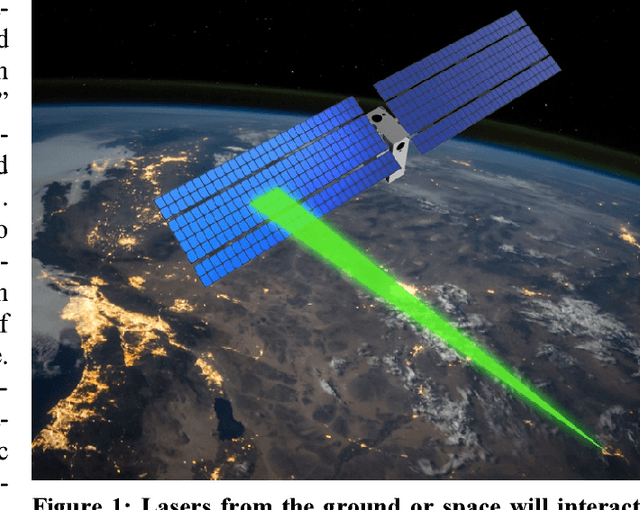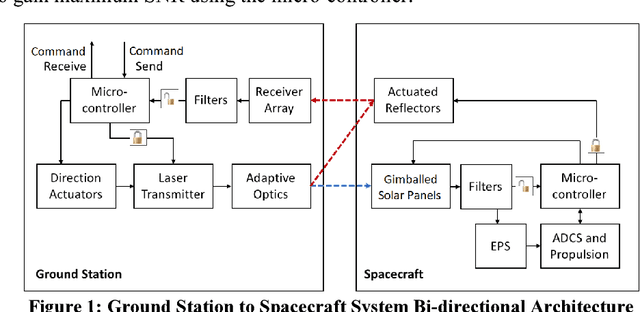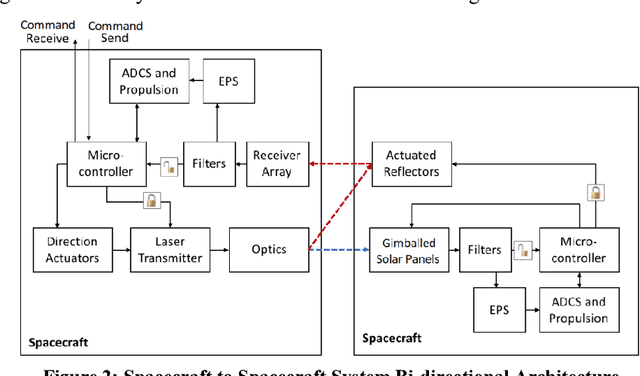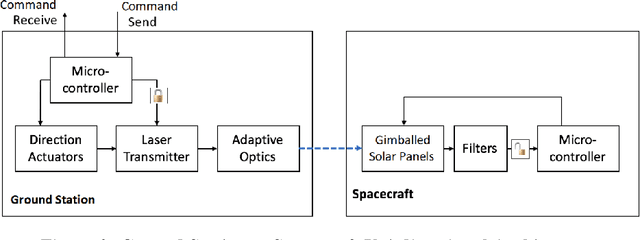Vishnu Reddy
Laser Communication and Coordination Control of Spacecraft Swarms
Jan 25, 2019



Abstract:Swarms of small spacecraft offer whole new capabilities in Earth observation, global positioning and communications compared to a large monolithic spacecraft. These small spacecrafts can provide bigger apertures that increase gain in communication antennas, increase area coverage or effective resolution of distributed cameras and enable persistent observation of ground or space targets. However, there remain important challenges in operating large number of spacecrafts at once. Current methods would require a large number of ground operators monitor and actively control these spacecrafts which poses challenges in terms of coordination and control which prevents the technology from scaled up in cost-effective manner. Technologies are required to enable one ground operator to manage tens if not hundreds of spacecrafts. We propose to utilize laser beams directed from the ground or from a command and control spacecraft to organize and manage a large swarm. Each satellite in the swarm will have a customized "smart skin" con-taining solar panels, power and control circuitry and an embedded secondary propulsion unit. A secondary propulsion unit may include electrospray pro-pulsion, solar radiation pressure-based system, photonic laser thrusters and Lorentz force thrusters. Solar panels typically occupy the largest surface area on an earth orbiting satellite. A laser beam from another spacecraft or from the ground would interact with solar panels of the spacecraft swarm. The laser beam would be used to select a 'leader' amongst a group of spacecrafts, set parameters for formation-flight, including separation distance, local if-then rules and coordinated changes in attitude and position.
On-Orbit Smart Camera System to Observe Illuminated and Unilluminated Space Objects
Sep 06, 2018



Abstract:The wide availability of Commercial Off-The-Shelf (COTS) electronics that can withstand Low Earth Orbit conditions has opened avenue for wide deployment of CubeSats and small-satellites. CubeSats thanks to their low developmental and launch costs offer new opportunities for rapidly demonstrating on-orbit surveillance capabilities. In our earlier work, we proposed development of SWIMSat (Space based Wide-angle Imaging of Meteors) a 3U CubeSat demonstrator that is designed to observe illuminated objects entering the Earth's atmosphere. The spacecraft would operate autonomously using a smart camera with vision algorithms to detect, track and report of objects. Several CubeSats can track an object in a coordinated fashion to pinpoint an object's trajectory. An extension of this smart camera capability is to track unilluminated objects utilizing capabilities we have been developing to track and navigate to Near Earth Objects (NEOs). This extension enables detecting and tracking objects that can't readily be detected by humans. The system maintains a dense star map of the night sky and performs round the clock observations. Standard optical flow algorithms are used to obtain trajectories of all moving objects in the camera field of view. Through a process of elimination, certain stars maybe occluded by a transiting unilluminated object which is then used to first detect and obtain a trajectory of the object. Using multiple cameras observing the event from different points of view, it may be possible then to triangulate the position of the object in space and obtain its orbital trajectory. In this work, the performance of our space object detection algorithm coupled with a spacecraft guidance, navigation, and control system is demonstrated.
 Add to Chrome
Add to Chrome Add to Firefox
Add to Firefox Add to Edge
Add to Edge